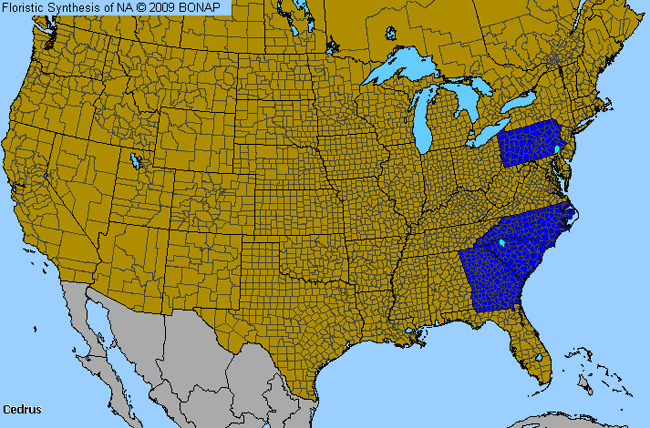Cedar (Cedrus)

Cedar Genus Details

Cedars are very popular landscape evergreen trees with small clustered needles 1-2 inches long. They have large, erect, solid "pine" cones that take 2 years to mature. Male flowers appear in upright catkins on the same trees as female flowers. The Deodora cedar is native to the Himalayas, but is found in the U.S. now too, and can grow to 100 feet tall. Cedars are grown throughout the U.S. in warmer regions. Deodora cedar yields an oil, that when distilled, is used for bronchitis and skin eruptions.
Cedar Allergy Info

Cedars are high pollen producers and have not commonly been implicated in pollinosis. Mountain cedar, a particularly bad allergen in TX, OK, and AR, is actually a member of a different genus, and should not be confused with this one. Even though the common name of this genus is "cedar", like the common name in many allergenic genera, this particular one is in the pine family, and is therefore not commonly a problem to most people.
Cedar Pollen Description

No pollen description is currently available.
Species in This Genus

Allergenicity Legend:
 Mild Allergen |
Mild Allergen |
 Moderate Allergen |
Moderate Allergen |
 Severe Allergen |
Severe Allergen |
 Allergy Test Available
Allergy Test Available
Cedar (Cedrus) is a genus of the PINACEAE family.
This genus includes the following allergenic species:
This genus includes the following allergenic species:












